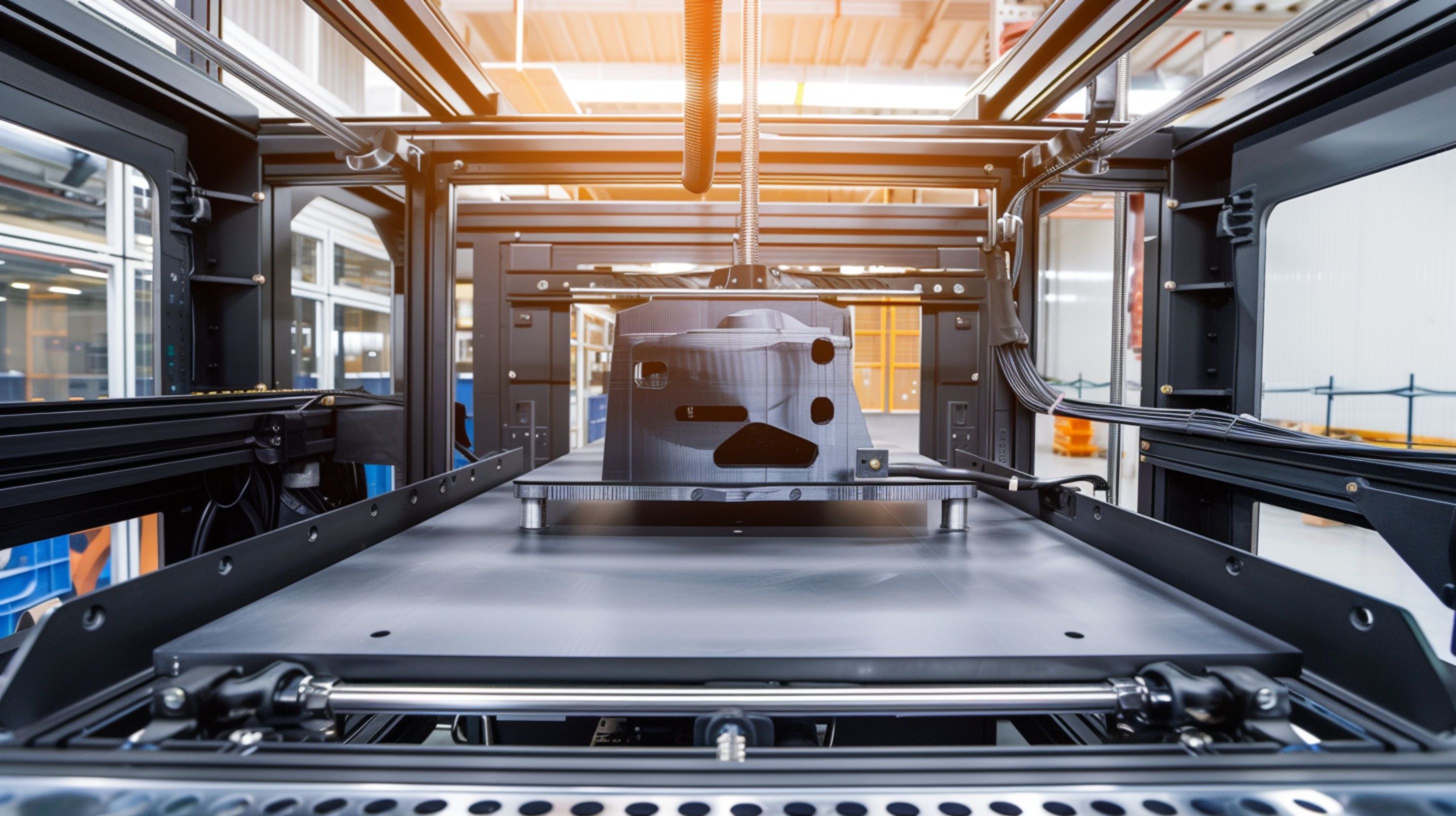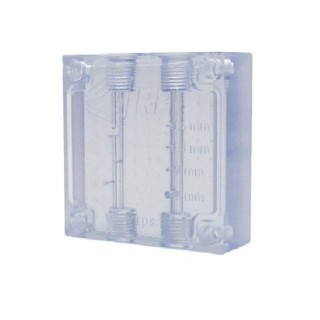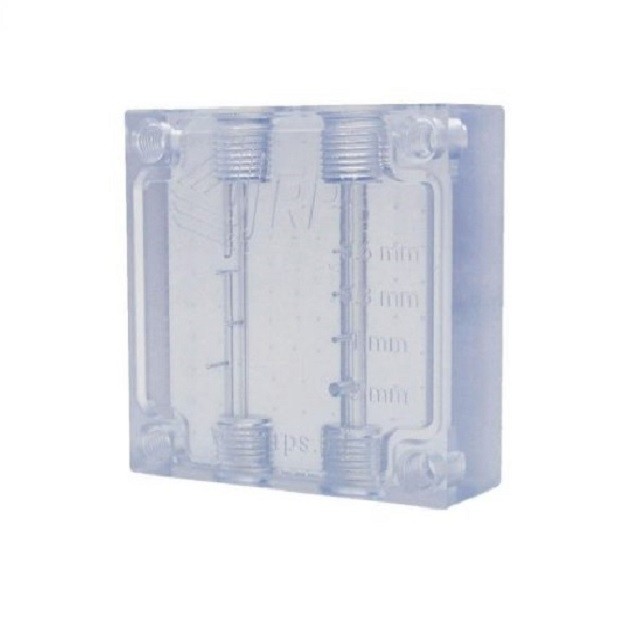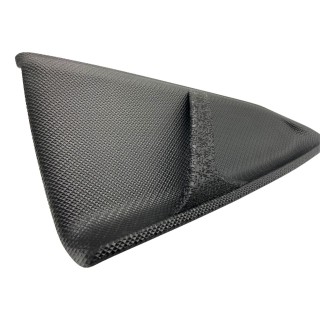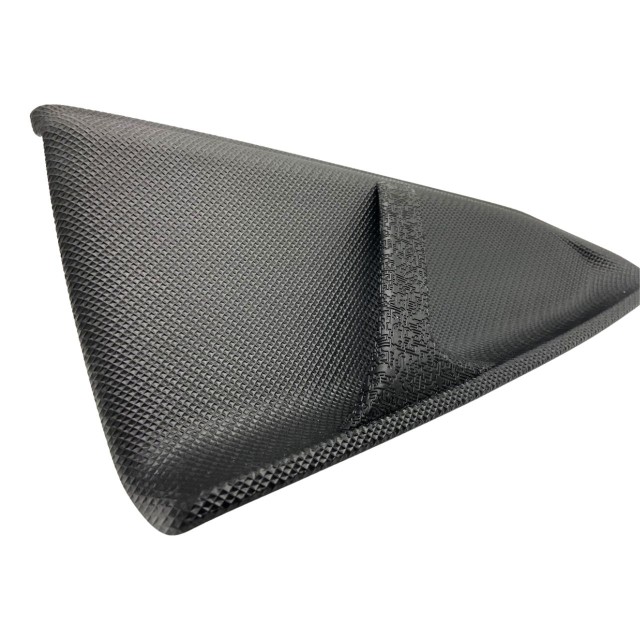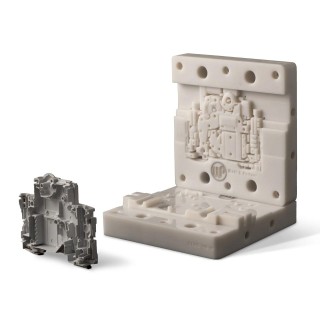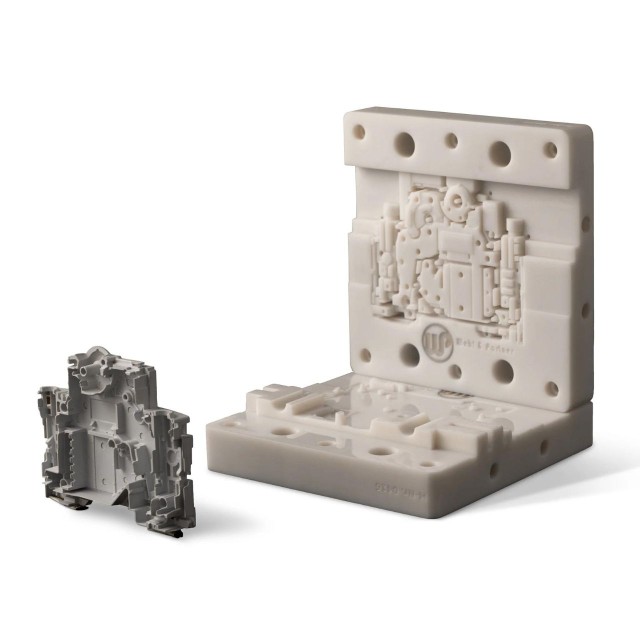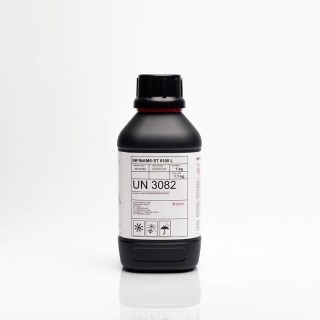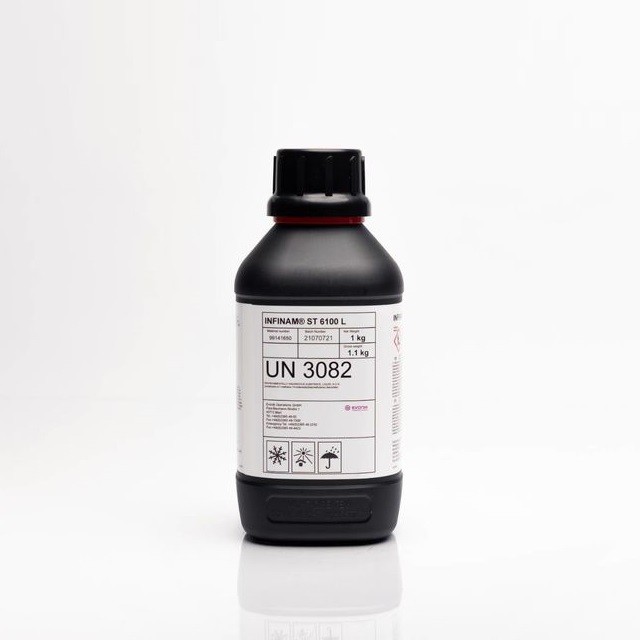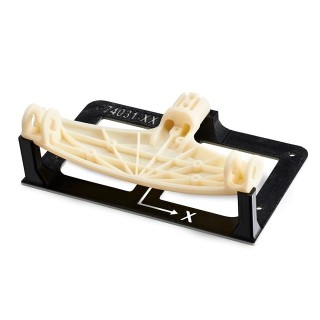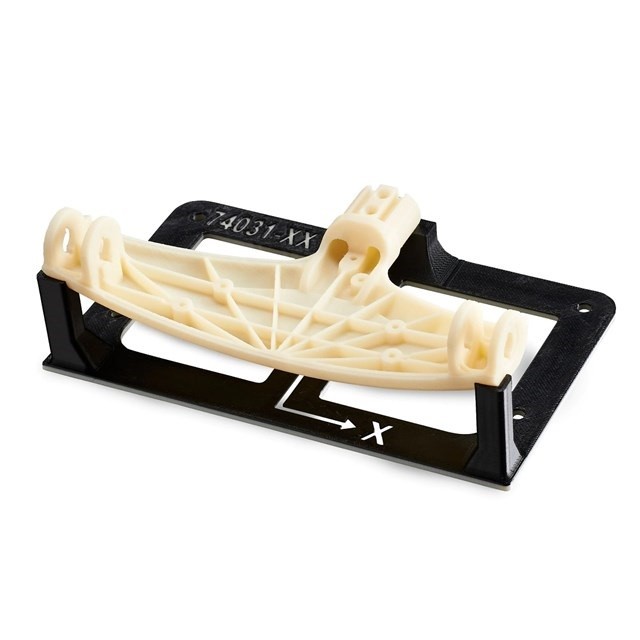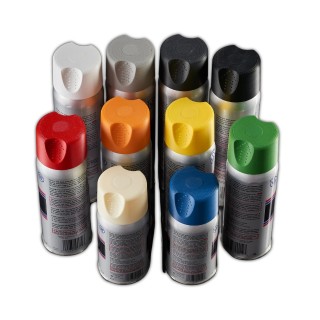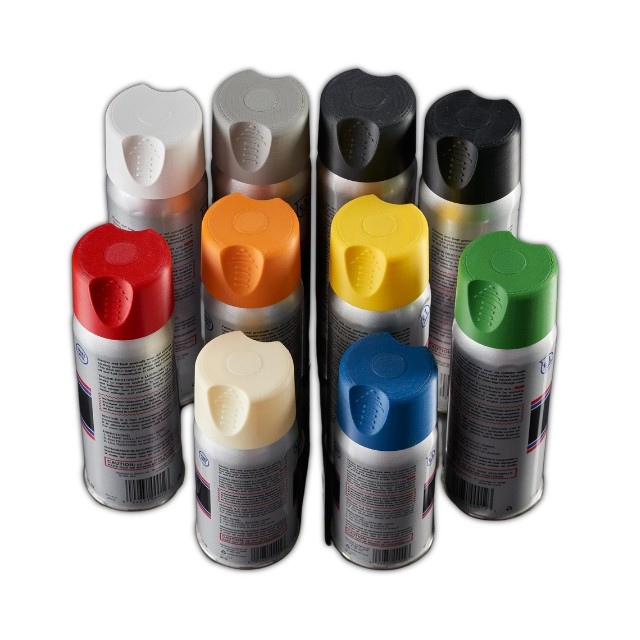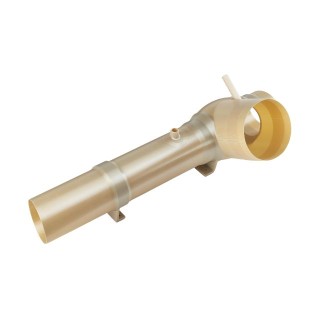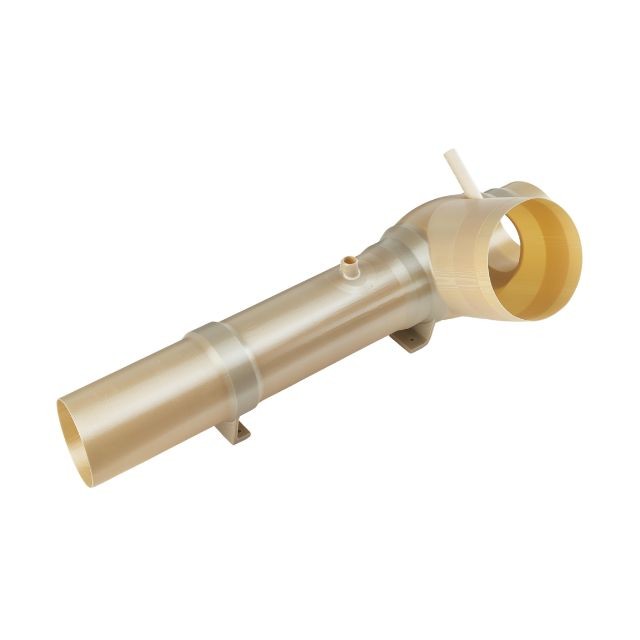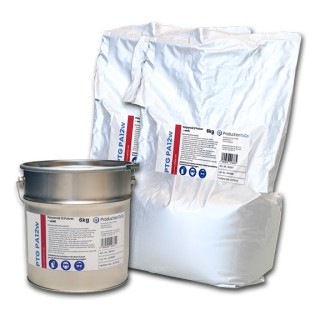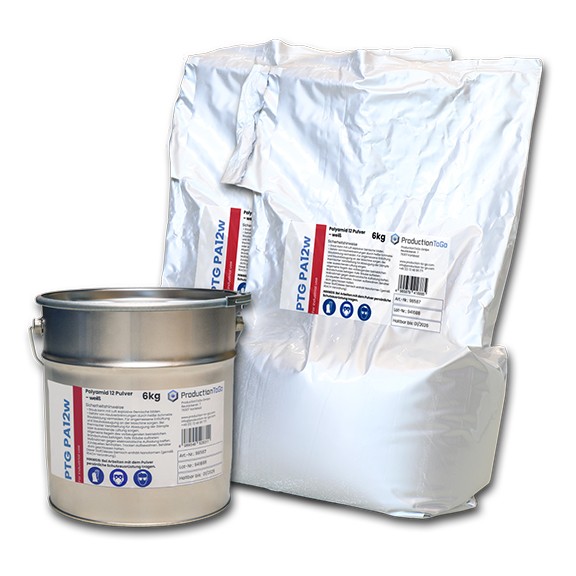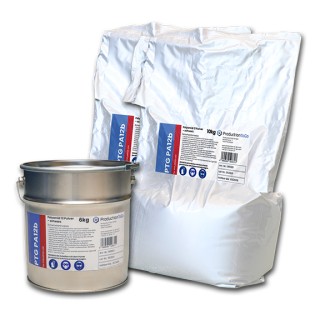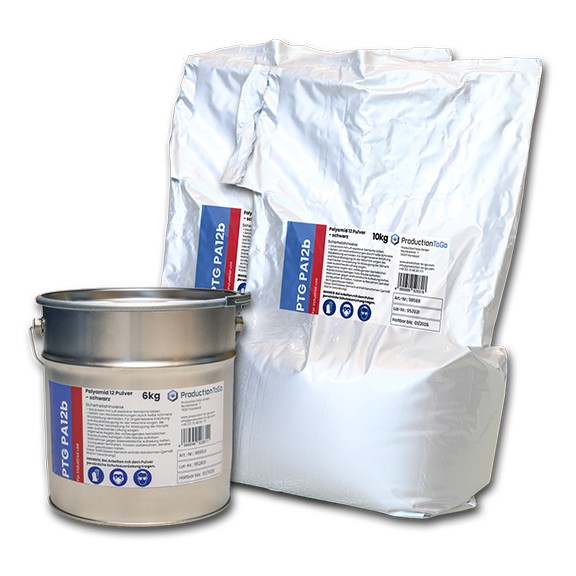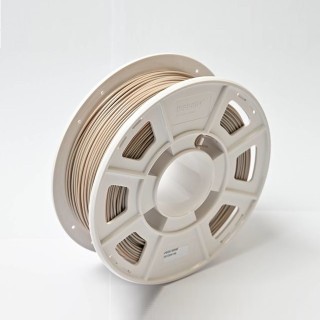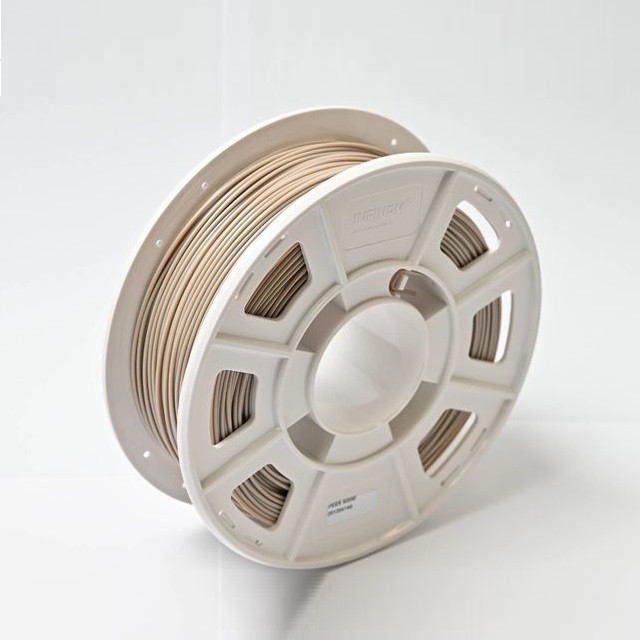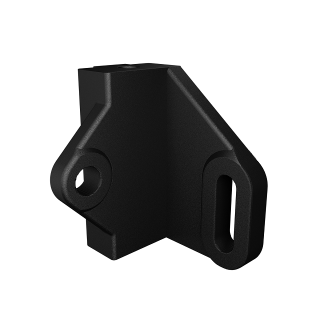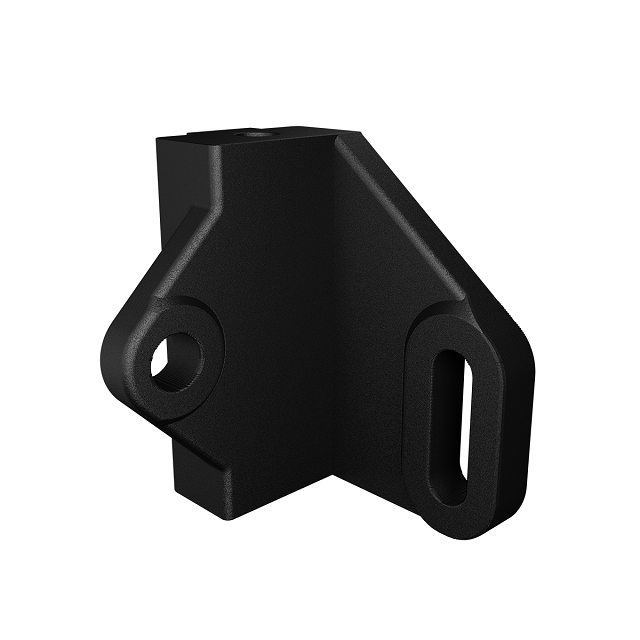What does large components imply in 3D printing?
In the context of 3D printing, the term "large-scale" often refers to objects or parts that are larger than the standard build volume of conventional desktop 3D printers. The definition of "large" depends on the 3D printing technology used and the capabilities of the printer. Desktop printers typically have build volumes ranging from a few liters to one hundred liters. For very large parts, printers with a much larger build volume are required.
What characteristics make a component large?
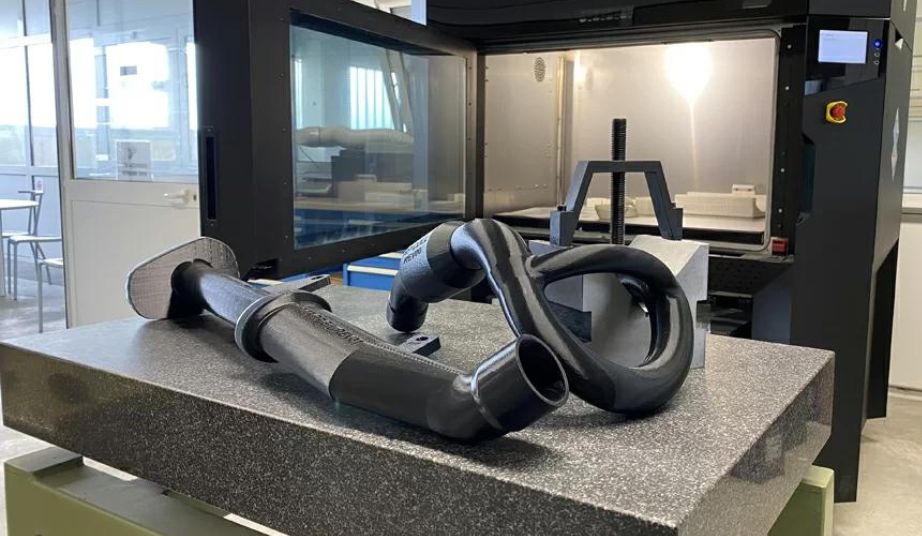
Build Volume
The build volume is above the standard 300x300x300 mm from desktop 3D printers and is defined by their physical dimensions.
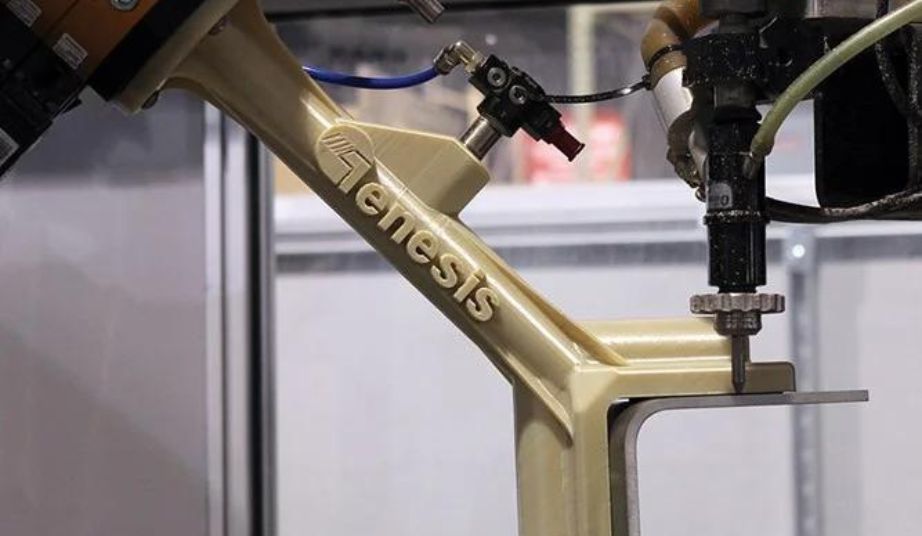
Single-Piece Printing
There is minimal to no need for the assembly of multiple smaller parts to create a bigger/final part.
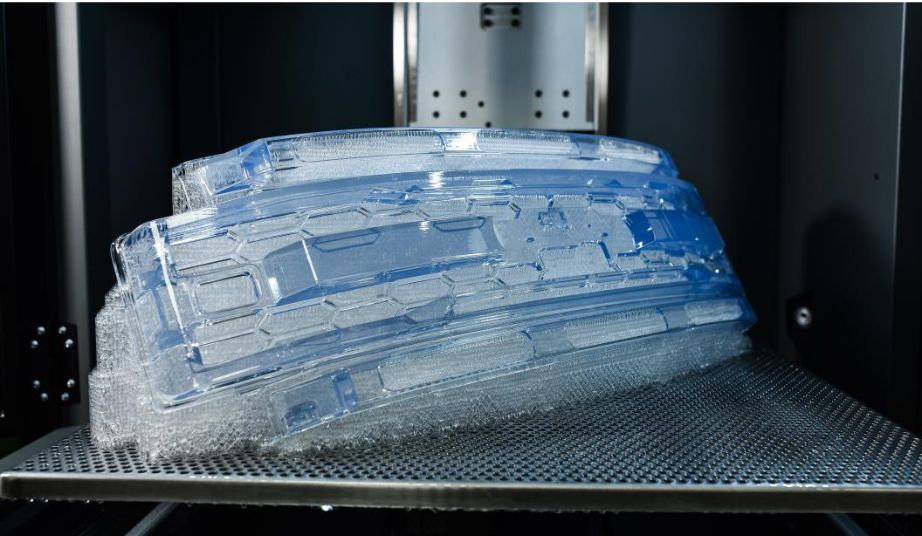
Structural Elements
Large components normally include structural elements such as beams, supports, or frames that contribute to the overall stability and functionality of the printed object.
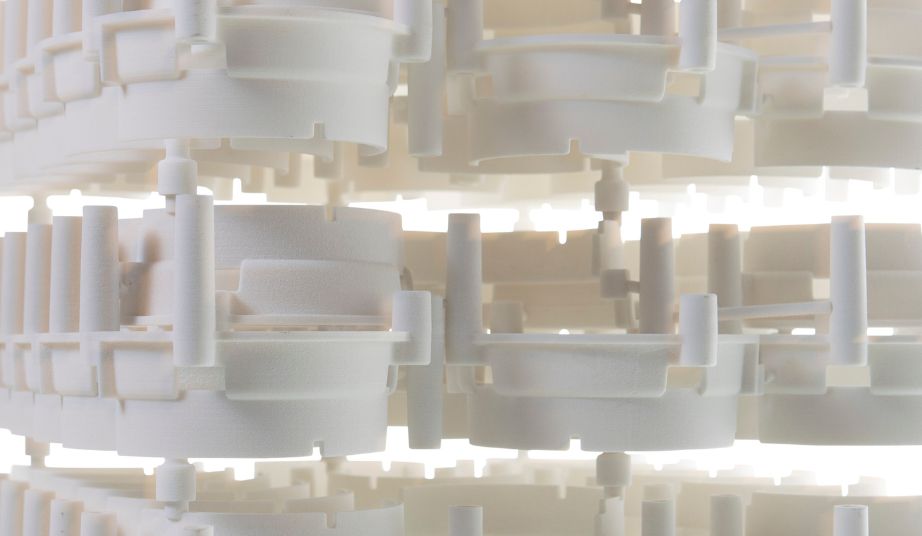
Application-Specific Criteria
In some cases, a large component may be relatively small in another. For example, a large medical equipment component may be larger than an automotive part.
What are the benefits of 3D printing large components?
Cost-Effectiveness and Material Optimization
3D printing for large-scale applications offers significant economic benefits, particularly in terms of material utilisation. Traditional subtractive manufacturing methods frequently produce significant waste, whereas 3D printing enables precise layer-by-layer building, reducing material waste and optimising resource efficiency.
Design Freedom and Complexity
The intrinsic flexibility of 3D printing allows designers to build sophisticated and complicated geometries that were previously difficult or impossible to produce using traditional production processes. This design freedom benefits large-scale applications, such as architectural buildings or artistic exhibits, allowing for the creation of unique and visually appealing products.
Rapid Prototyping and Iteration
Large format 3D printing enables rapid prototyping and short iteration cycles, allowing designers and engineers to quickly visualize and improve their ideas. This faster design cycle is particularly useful in industries such as architecture, where short iterations can lead to more sophisticated and optimized structures.
What are the applications of 3D printing large components?
Prototyping and Manufacturing of Vehicle Components
Large-scale 3D printing allows car manufacturers to rapidly build, prototype, and iterate on vehicle components such as body panels, interior components, and exterior features. This accelerates the design, testing, and manufacturing processes for new car models.
Addressing the Aerospace Industry
Large-scale 3D printing is used to manufacture structural components for aircraft, such as wings, fuselage sections, and tail sections; complex and high-performance engine components, including turbine blades, fuel nozzles, and combustion chambers; large-scale tools and fixtures, spacecraft components, interiors, UAVs, and even heat exchangers and thermal management systems. This technology allows for the creation of lightweight yet strong parts with intricate geometries that are challenging to produce using traditional methods.
Industrial Requirements
Large-sized 3D printing in industrial applications revolutionises manufacturing by enabling customised tooling, production of large machine components, and accelerating prototyping processes. The technology finds diverse applications, including creating architectural models, producing components for the oil and gas sector, and fabricating large-scale artistic installations. Its impact extends to the energy sector, construction industry, and consumer goods manufacturing, showcasing the versatility and transformative potential of large-sized 3D printing across various industrial domains.
What materials do we recommend for large-format 3D printing?
Somos® WaterShed® XC 11122 from Stratasys® - Printed on the Stratasys® Neo®800
Somos® WaterShed® XC 11122 is a popular resin among designers due to its ABS and PBT-like qualities for stereolithography technology. Somos® WaterShed® provides detailed parts with high clarity and water resistance, making them ideal for fluid flow monitoring.
The robust, clear parts have the look and feel of manufactured plastic, with a smooth finish that speeds up testing. The material is durable enough to resist rigorous wind tunnel testing, making it an excellent alternative for the automobile and aerospace industries.
The Stratasys® Neo®800 is ideal for those who need high-definition parts for their applications. Using the Neo®800 to print the Somos® WaterShed® XC 11122 allows you to quickly produce clear SD parts or produce clear HD parts with fine resolution and intricate, small details.
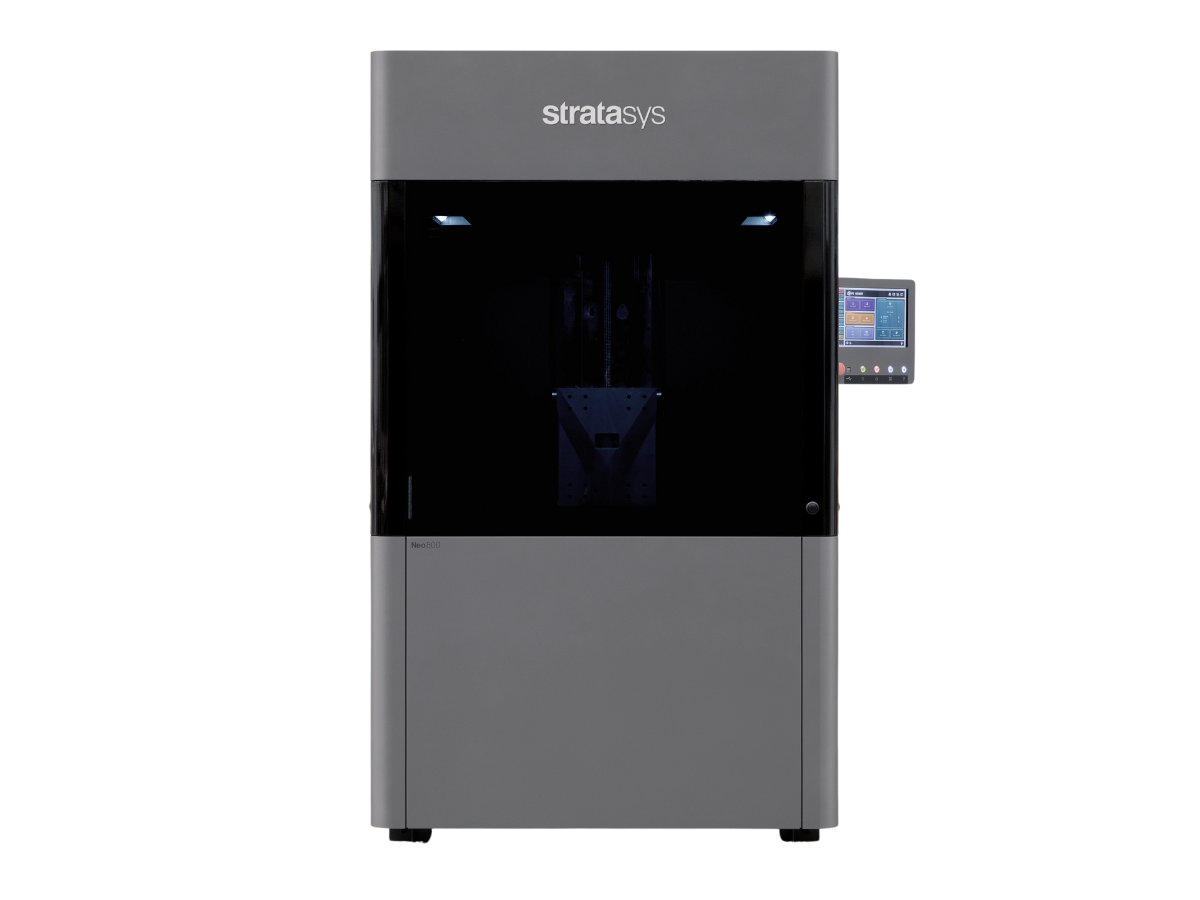
Neo®800

Have your components 3D printed now! Do you have any questions? Contact our experts!
Somos® WaterShed® Black from Stratasys® - Printed on the Stratasys® Neo®800
Somos® WaterShed® Black, a stereolithography resin, has identical qualities and processing to Somos® WaterShed® XC 11122. It produces hard, durable parts in a true black color without painting.
Somos® WaterShed® Black's enhanced formulation allows for up to 50% faster processing than competing black SL materials, requiring less finishing and providing more uniform processing over time. Somos® WaterShed® Black also has excellent moisture and chemical resistance.
The Stratasys® Neo®800 is ideal for those who need large high-definition parts for their applications. Using such a machine to print the Somos® WaterShed® Black from Stratasys® allows you to quickly produce large-format SD parts or produce large-format HD parts with fine resolution and intricate, small details.

Neo®800

Have your components 3D printed now! Do you have any questions? Contact our experts!
Somos® PerFORM™ from Stratasys® - Printed on the Stratasys® Neo®800
Somos® PerFORM™ is the resin of choice for composite parts that need to be strong, stiff, and resistant to high temperatures. Somos® PerFORM™ is the appropriate material for a wide range of applications, including tooling, wind tunnel testing, high temperature testing, electrical casings, and automobile housings, due to its superior heat tolerance, detail resolution, and stiffness.
Parts created with Somos PerFORM™ have the lowest viscosity of any composite stereolithography material, making them faster to build, easier to post-process, superior in sidewall quality, and providing unrivalled detail resolution. Somos® PerFORM™ is a ceramic material with extremely high heat tolerance and rigidity.
The Stratasys® Neo®800 was designed with the customer in mind for reliable, gold standard SLA 3D printing. Using the Somos® PerFORM™, produce dimensionally accurate parts with exceptional sidewalls and crisp feature resolution, resulting in a 50% reduction in finishing time.

Neo®800

Have your components 3D printed now! Do you have any questions? Contact our experts!
INFINAM® ST 6100 L from Evonik - Printed on the Stratasys® Neo®800
Specially developed for polymerization technologies such as SLA (stereolithography) or DLP (digital light processing), this high-performance material unlocks the potential of large-scale additive manufacturing.
INFINAM® ST 6100 L sets new standards in the high-strength photopolymer resin category with a combined tensile strength of 89 MPa, flexural stress of 145 MPa and HDT of 120 °C, closing the material gap in ultra-high-strength photopolymers.
The Stratasys® Neo®800 was developed with the consumer in mind, providing dependable, gold-standard SLA 3D printing. The 3D printer's open material and ability to print with the INFINAM® ST 6100 L allow for the fabrication of dimensionally accurate components with outstanding sidewalls and fine feature resolution, leading to a 50% reduction in finishing time.

Neo®800

Have your components 3D printed now! Do you have any questions? Contact our experts!
ABS-M30 from Stratasys® - Printed on the Stratasys® F770
ABS-M30 introduces the familiarity and versatility of ABS (acrylonitrile butadiene styrene) to the FDM 3D printing plastics range. It is an excellent material for form and fit testing, functional prototyping, and other 3D printing applications.
ABS-M30 is distinguished by its strength and toughness while remaining lightweight and robust. ABS-M30 is the best choice for general-purpose 3D printing due to its usability and cost-effectiveness.
The F770 FDM 3D printer has one of the largest print volumes among the Stratasys® FDM systems. This printer combined with the ABS-M30 filament from Stratasys® lets you create massive parts or vast collections of smaller parts with the requirements you need.
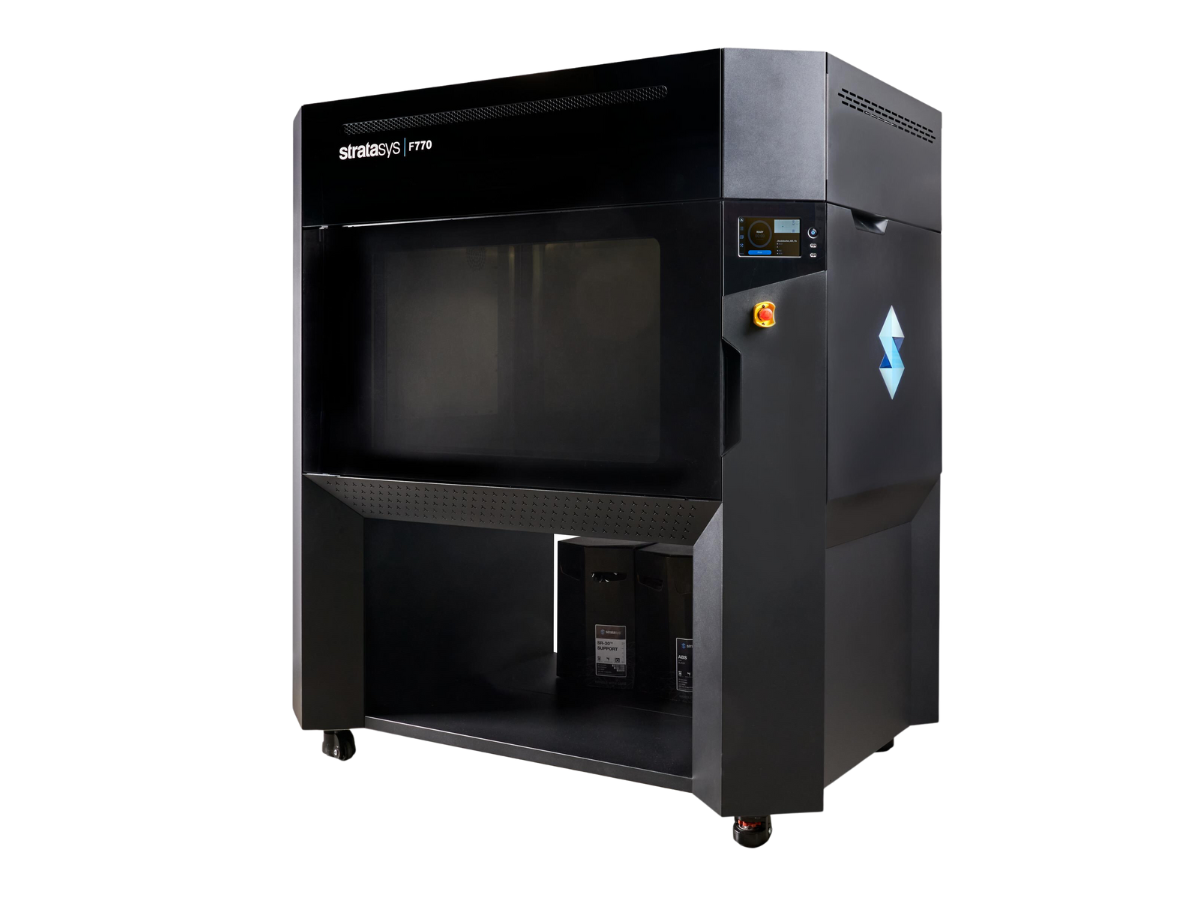
F770™

Have your components 3D printed now! Do you have any questions? Contact our experts!
ASA from Stratasys® - Printed on the Stratasys® F770
ASA filament (acrylonitrile styrene acrylate) is the ideal all-purpose 3D printing thermoplastic, suited for a wide range of applications. It has the same chemical makeup as ABS plastic but has three advantages: greater mechanical qualities, higher aesthetics, and UV resistance.
ASA material is also available in ten colours, more than any other FDM material.
The F770 FDM 3D printer offers one of the biggest print volumes among all Stratasys FDM systems. This printer, when combined with Stratasys® ASA filament, allows you to manufacture large parts or vast collections of smaller parts that meet your specific requirements.

F770™

Have your components 3D printed now! Do you have any questions? Contact our experts!
ULTEM™ AM9085 from Stratasys® - Printed on the Stratasys® Fortus® 450mc
ULTEM™ AM9085 filament is a high-performance thermoplastic with exceptional physical and mechanical qualities, ideal for high-demand and specialist applications utilising FDM technology. It is one of the strongest Stratasys® FDM materials, and its high strength-to-weight ratio makes it ideal for high-strength, low-weight applications.
ULTEM™ AM9085 filament has strong impact resistance, excellent chemical tolerance, and meets transportation industry standards for flame, smoke, and toxicity.
The Fortus® 450mc provides precise, dependable performance, allowing you to revolutionise supply chains, speed manufacturing, and save production costs. Its proven reliability and capability to use the ULTEM™ AM9085 makes it a trusted 3D printing solution for manufacturers in the aerospace, automotive, rail, oil and gas, and commercial products industries.
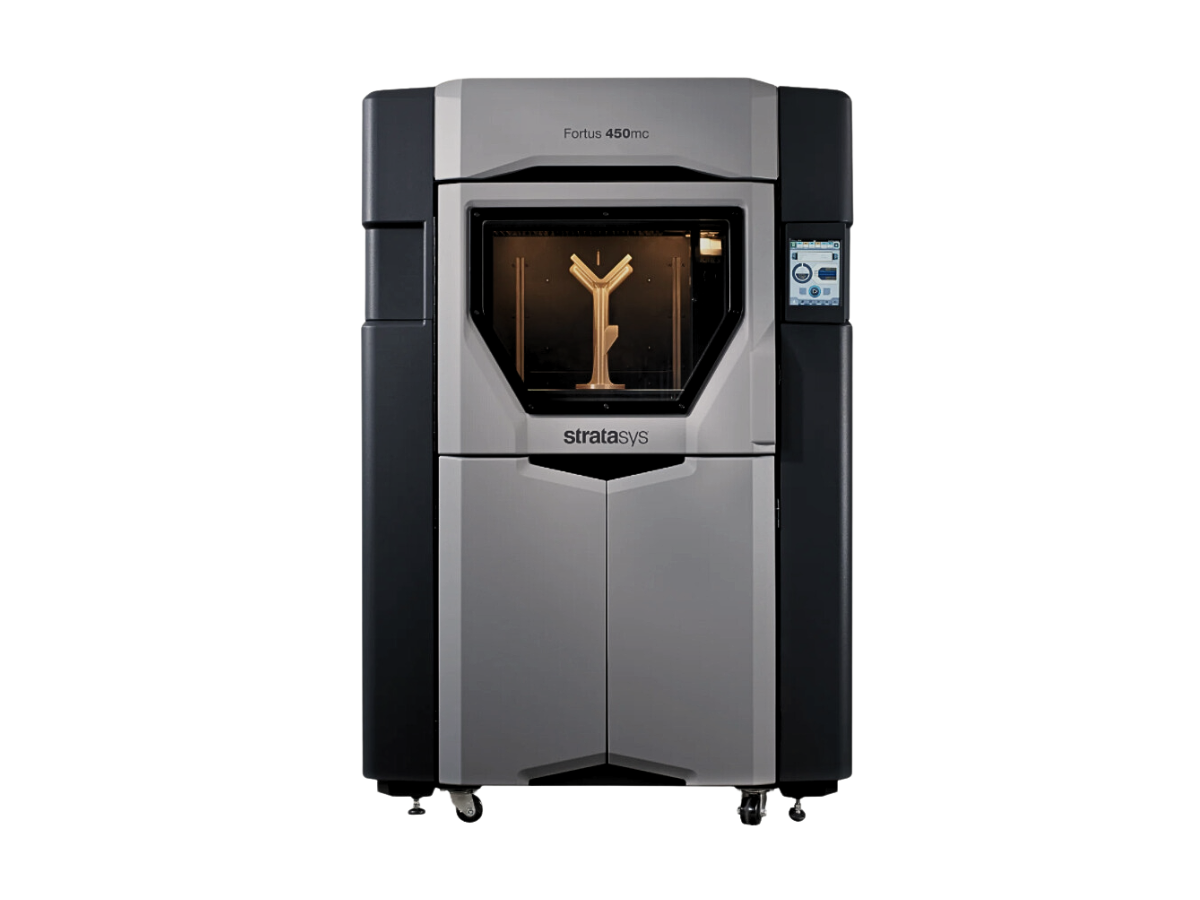
Fortus® 450mc

Have your components 3D printed now! Do you have any questions? Contact our experts!
PTG PA12 from ProductionToGo - Printed on multiple machines
PTG PA12 is a high-performance polymer with superior detail fineness and surface resolution. It also has excellent mechanical qualities and resistance to a variety of chemicals.
PTG PA12 is adaptable and has excellent qualities for functional prototypes, individual components, and series production.
A variety of printers, including Nexa3D®'s QLS 230, QLS 236, QLS 260, QLS 820, and the Stratasys® H350, can print this material with precision without the use of supports, allowing you to design complicated structures.
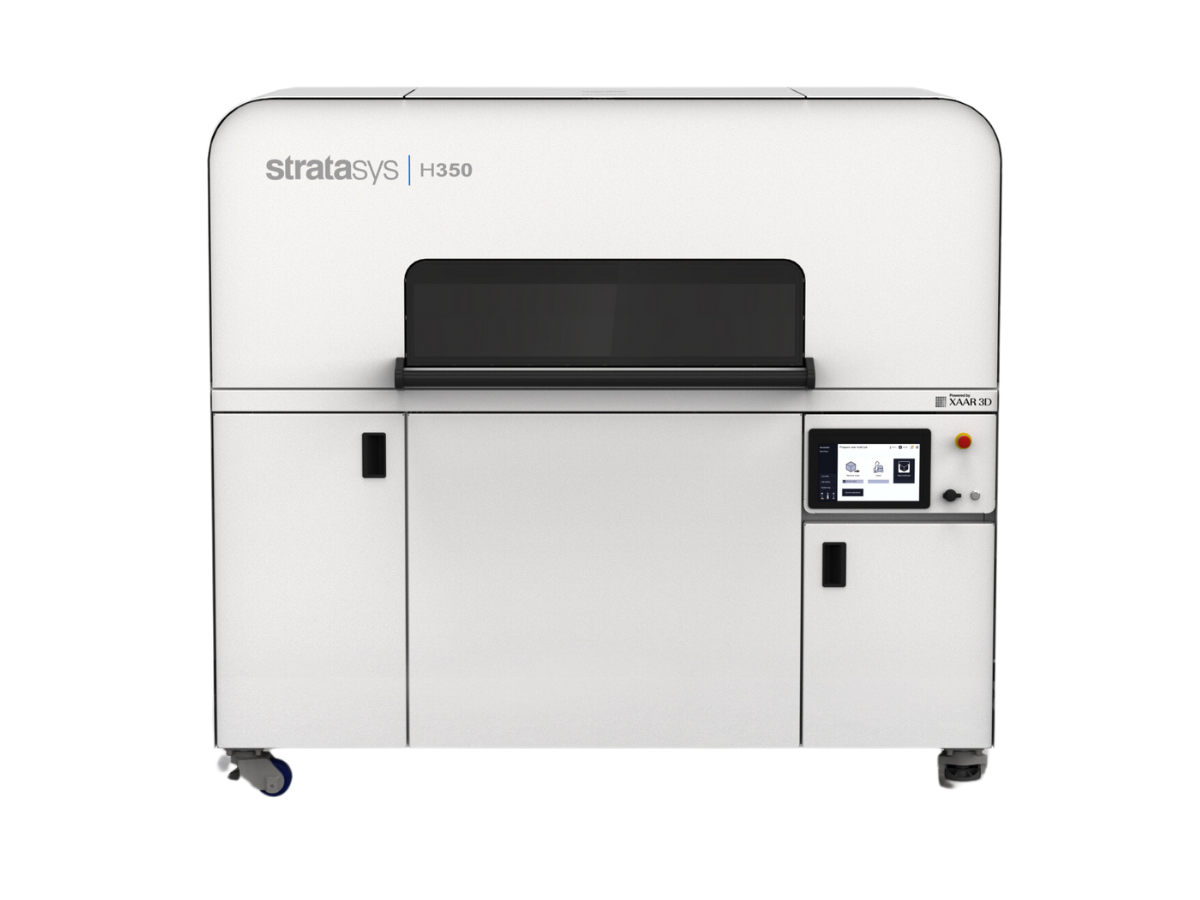
H350™
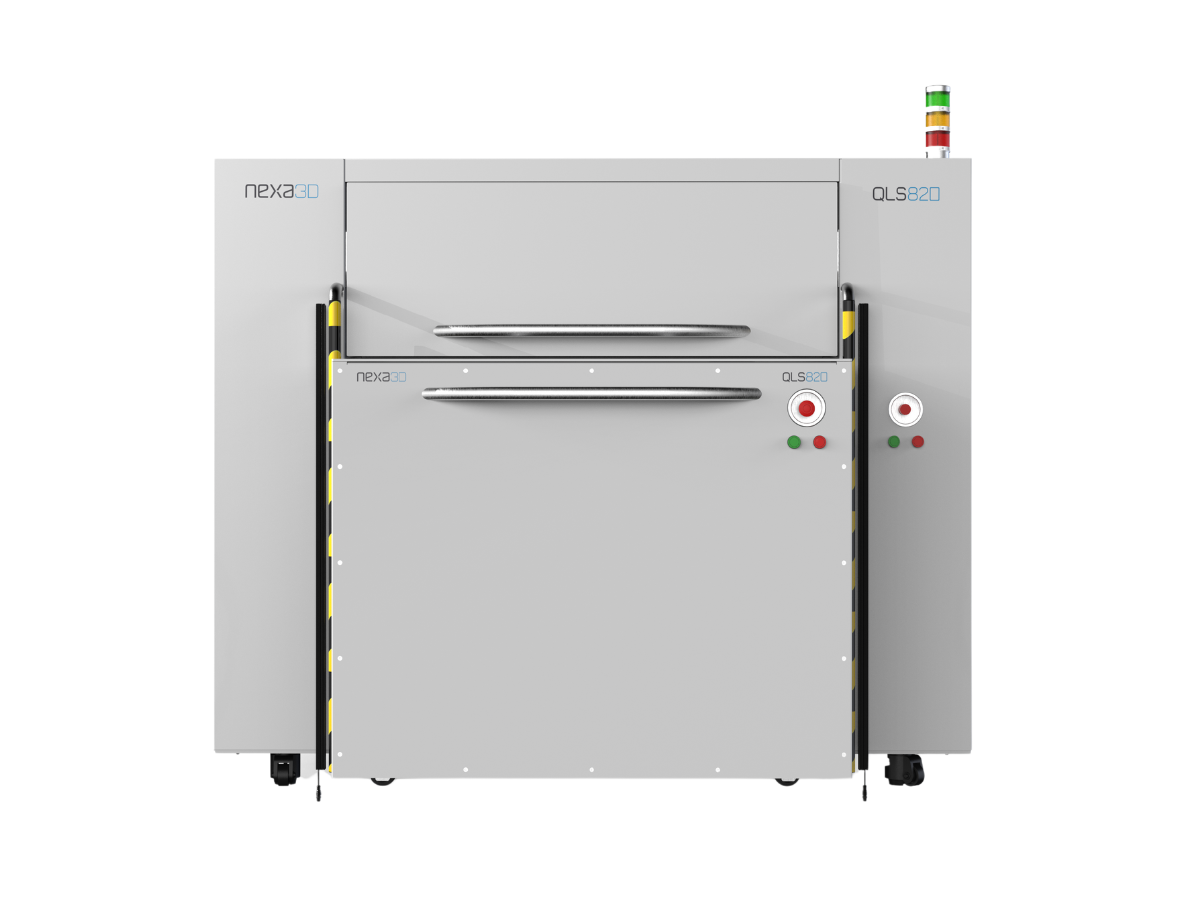
QLS 820
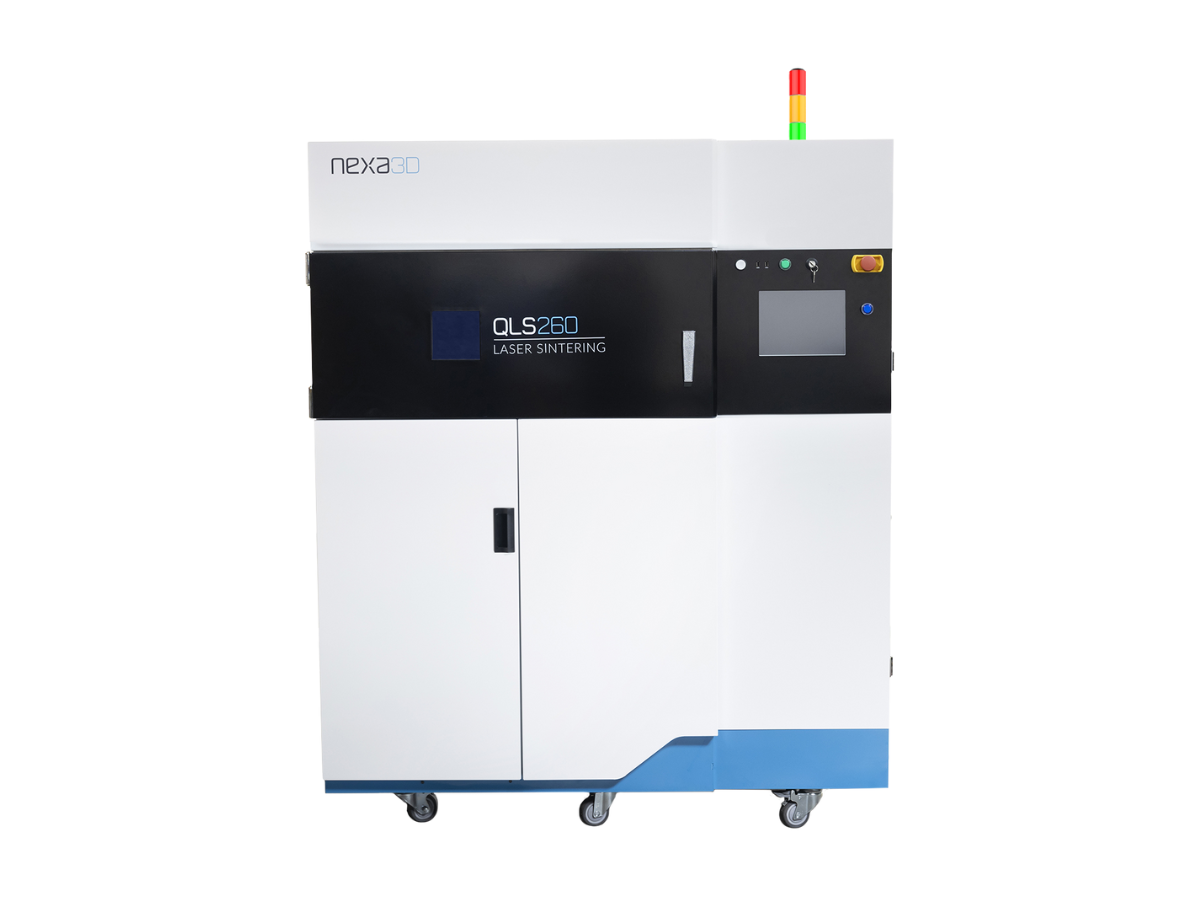
QLS 260
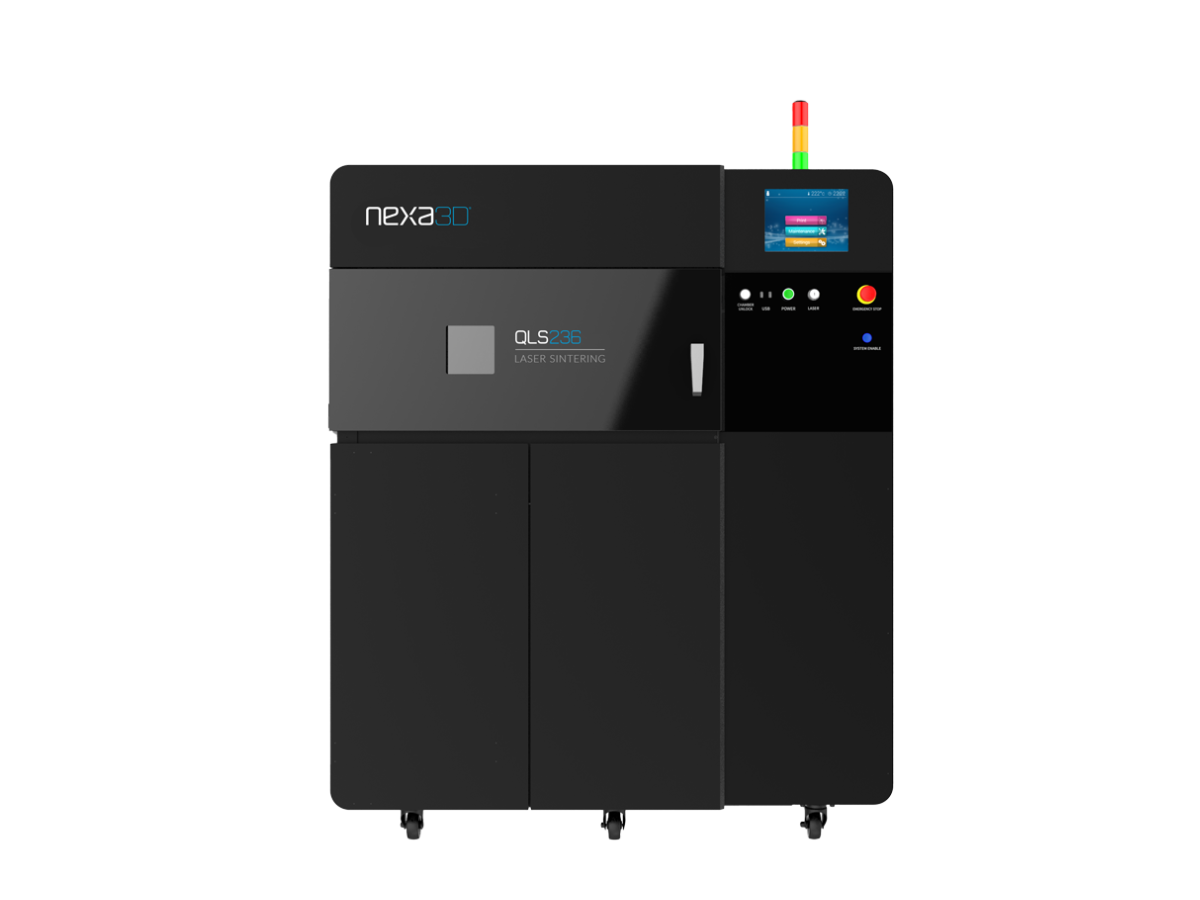
QLS 236
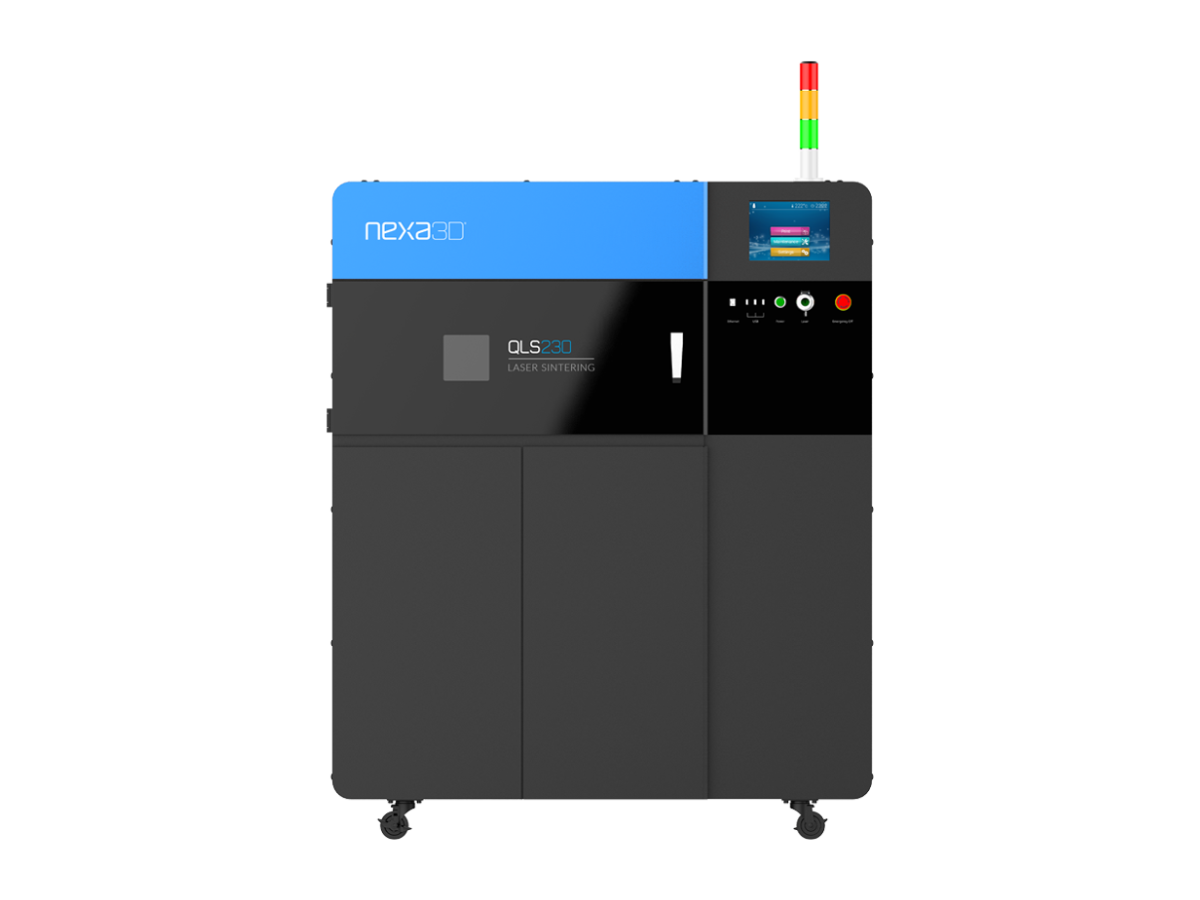
QLS 230

Have your components 3D printed now! Do you have any questions? Contact our experts!
INFINAM® PEEK from Evonik - Printed on the Roboze ARGO 500
One of the distinguishing features of the INFINAM® PEEK filament is its great temperature resistance, which makes it ideal for printing items that must endure extreme temperatures.
With a glass transition temperature of 152 °C, this material can endure long-term temperatures of up to 250 °C and short-term temperatures of up to 300 °C, allowing for the fabrication of parts suitable for use in hostile environments. PEEK filament is also extremely resistant to most organic and inorganic compounds, dissolving only in intense sulfuric and nitric acid.
The Roboze ARGO 500 is a high-temperature industrial 3D printer from the Italian manufacturer Roboze that has an extruder capable of reaching 450°C and build envelope that heats up to 180°C. The ARGO 500 is compatible with the INFINAM® PEEK from Evonik and can create large-format parts with a 10 µm positioning accuracy with consistent repeatability.
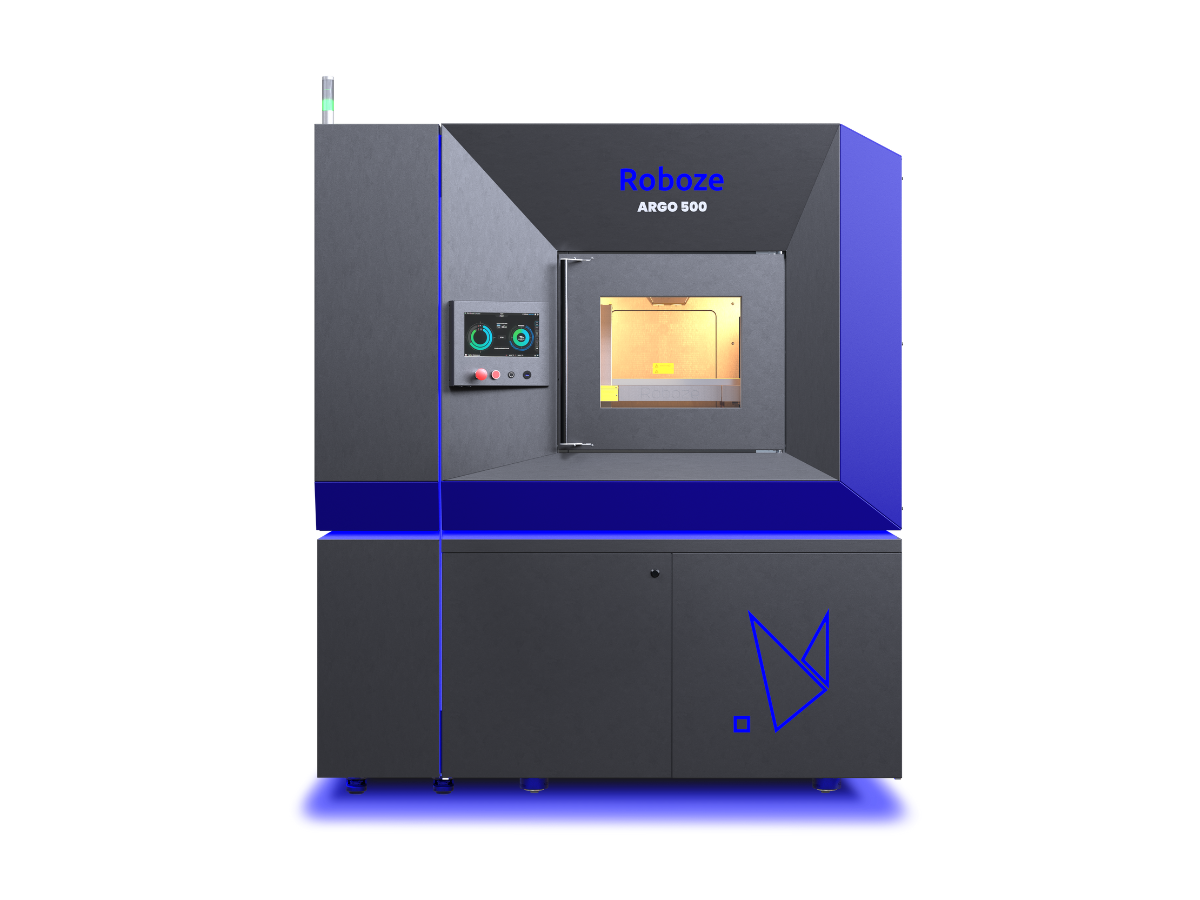
ARGO 500

Have your components 3D printed now! Do you have any questions? Contact our experts!
Carbon PA (PRO) from Roboze - Printed on the Roboze ARGO 500
Carbon PA PRO is a composite material that incorporates chopped carbon fibers into a polyamide matrix, resulting in one of the best performing 3D printing polymers in the industry. Reinforcing the semi-crystalline PA 6 plastic with chopped carbon fibers yields a substantially stronger material than standard polyamide.
Roboze's carbon fiber reinforced polyamide provides exceptional mechanical strength, stiffness, and thermal resistance. In addition, the polyamide matrix is robust at low temperatures and easy to process. An ideal alternative for metal substitution applications.
The Roboze ARGO 500 is a high-temperature industrial 3D printer by Italian manufacturer Roboze, with an extruder capable of reaching 450°C and a build envelope that can heat up to 180°C. The ARGO 500 works with the Carbon PA (PRO) and can produce large-format parts with 10 µm positioning accuracy and consistent reproducibility.

ARGO 500



